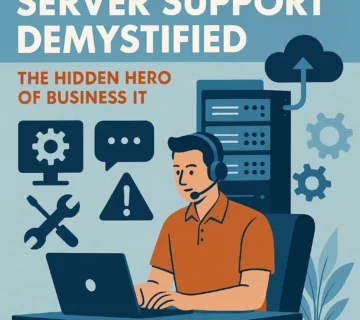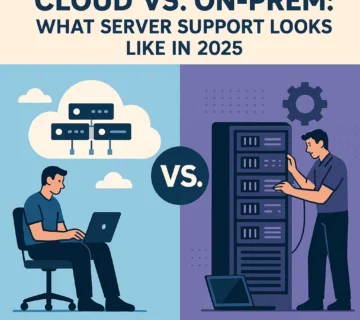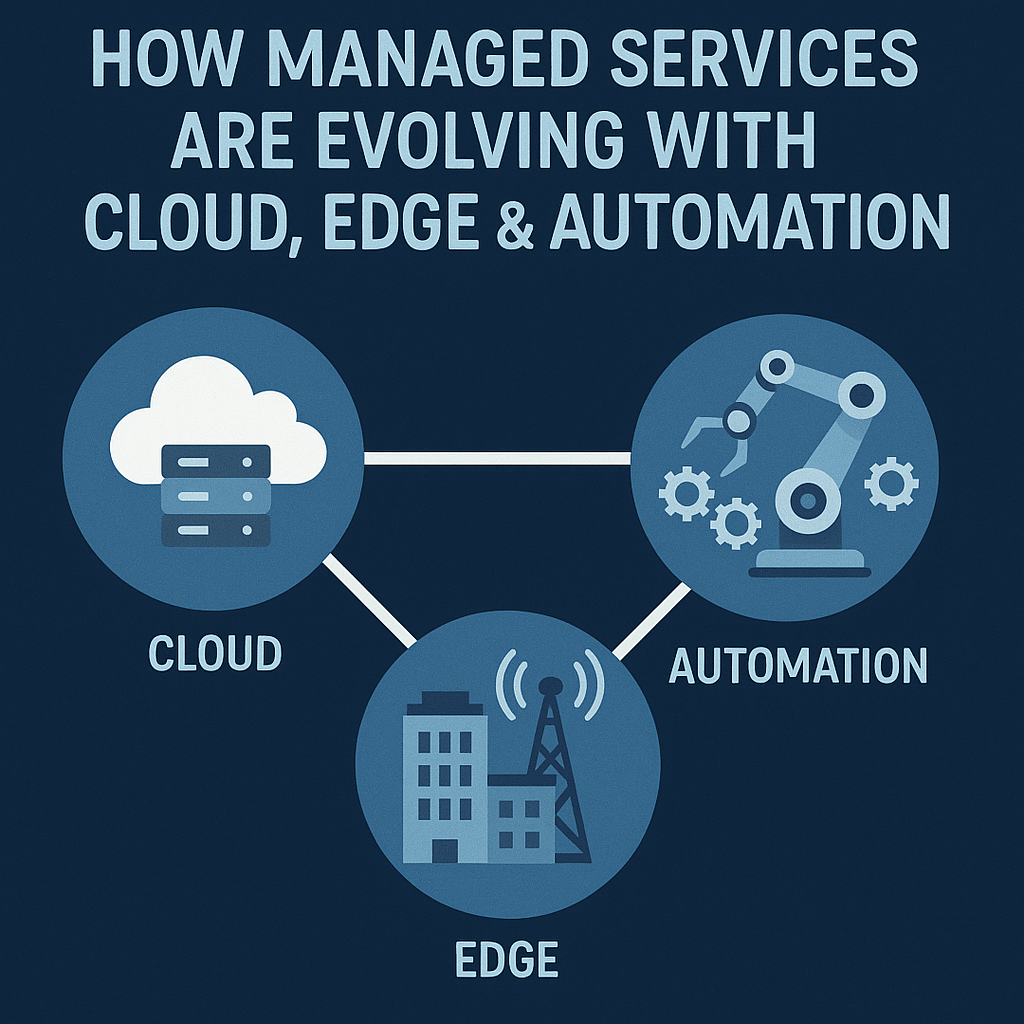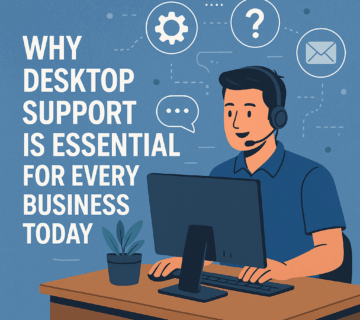The Hidden Security Gaps in Your Microsoft 365 Environment: What Every IT Leader Needs to Know

In today’s digital workplace, Microsoft 365 has become the backbone of organizational productivity. However, beneath the surface of this powerful platform lie security vulnerabilities that many IT leaders are unaware of. Recent industry research reveals a startling contradiction: while most organizations believe their Microsoft 365 security is robust, the reality tells a different story.
The False Sense of Security
A comprehensive study by CoreView uncovered a troubling paradox in Microsoft 365 security. Sixty percent of organizations rate their security posture as “established” or “advanced,” yet 60% of those same organizations have fallen victim to account compromise attacks.
This disconnect between perception and reality highlights a critical gap in understanding the true security landscape of Microsoft 365 environments. Traditional security measures may not be adequate for the evolving threat landscape, and organizations are operating under assumptions that could prove costly. There’s a significant gap between perceived and actual security effectiveness.
Understanding the Expanding Attack Surface
Microsoft 365 presents a complex and ever-expanding attack surface that challenges even experienced IT teams. The platform’s interconnected nature means that vulnerabilities can emerge from multiple vectors simultaneously.
Managing Microsoft 365 security involves navigating through interconnected services with different security configurations, rapid platform evolution with new features added regularly, and constant change making consistent security oversight difficult. Multiple attack vectors can emerge simultaneously, creating a complex security landscape.
Organizations struggle with limited visibility into security configurations, manual oversight processes that are time-consuming and error-prone, fragmented security policies that fail to provide consistent protection, and lack of cohesive governance frameworks across all Microsoft 365 services.
The Multi-Tenant Management Dilemma
Seventy-eight percent of organizations manage multiple Microsoft 365 tenants, creating a complex web of security challenges driven by various strategic and operational requirements.
Organizations choose multi-tenant architectures for several key reasons. Organizational alignment accounts for 47% of implementations, as companies seek to preserve operational autonomy for different business units, maintain separate identities for subsidiaries, and support independent operational procedures.
Compliance and data sovereignty requirements drive 35% of multi-tenant setups, helping organizations meet varying data protection regulations, comply with regional jurisdictional requirements, and ensure data residency compliance.
Security isolation motivates 34.8% of multi-tenant architectures, allowing organizations to enforce strict separation of duties, implement least privilege principles, and limit potential impact of security breaches.
Merger and acquisition integration also drives multi-tenant adoption as organizations inherit existing Microsoft 365 environments, maintain separate systems during integration, and preserve business continuity during transitions.
Organizations with 10+ tenants are 2.3 times more likely to report significant operational overhead. Each tenant adds its own management requirements including separate configurations, individual licensing considerations, administrative overhead, cross-tenant access risks, and identity and privilege sprawl.
The Application Permission Explosion
While organizations have made progress in controlling global administrator proliferation, a new security challenge has emerged. Only 20% of organizations have more than 10 global administrators, and 61% maintain five or fewer global admins, aligning with Microsoft’s best-practice recommendation.
However, application privilege escalation presents a new threat. Fifty-one percent of organizations have 250+ Entra apps with read-write permissions, 18% report over 1,000 applications with powerful permissions, and 43% of security-conscious organizations with five or fewer global admins still allow 250+ apps with read-write permissions.
Current management approaches reveal inadequate oversight mechanisms:
- No Process (16%): No formal process for managing application permissions, representing the highest risk category
- Manual Reviews (33%): Time-consuming and error-prone processes that are difficult to scale with growing app portfolios
- Built-in Tools (29%): Utilize Microsoft’s native management tools but with limited comprehensive oversight capabilities
- Third-party Solutions (22%): Invest in specialized permission management tools, offering the most comprehensive but least adopted approach
The Configuration Backup Blind Spot
Ninety-six percent of organizations say their data is backed up, but many overlook configuration backups entirely. A critical misunderstanding exists where 49% of IT leaders mistakenly believe Microsoft automatically backs up their configurations. Microsoft’s built-in tools focus on data protection, not configuration preservation, leaving organizations vulnerable to configuration-related disasters.
Current backup strategies show concerning gaps:
- Microsoft Built-in Tools (47%): Protects data effectively but has limited configuration backup capabilities
- Third-party Solutions (25%): Provides comprehensive protection for data and configurations with specialized disaster recovery features
- Manual Processes (18%): Unreliable and difficult to maintain, prone to human error and inconsistency
- No Strategy (10%): Highest risk category, completely vulnerable to configuration disasters
Organizations with formal disaster recovery plans achieve 58% fewer operational disruptions from misconfigurations and 72% fewer security incidents tied to configuration errors when combined with formal change control.
The Persistent MFA Implementation Gap
Multi-factor authentication remains one of the most effective security controls, yet implementation remains inconsistent. Current threat statistics reveal that 68% of organizations report attackers attempting Microsoft 365 access weekly, daily, or constantly. Ninety-nine point nine percent of account compromises occur in accounts lacking MFA protection, yet only 41% of organizations have implemented MFA effectively.
Organizations with automated MFA detection and enforcement experience 53% fewer account compromise incidents. Automated approaches eliminate gaps and inconsistencies from manual processes while ensuring comprehensive coverage across all user accounts.
Emerging Threats and Attack Vectors
The Microsoft 365 threat landscape continues to evolve with increasingly sophisticated attack methods across three primary categories.
Identity and access management attacks target complex permission and access control systems, exploit excessive permissions and unmonitored service accounts, and abuse gaps in access reviews and approval processes.
Configuration manipulation attacks focus on security settings rather than direct data theft, create persistent access channels through configuration changes, and disable security controls while establishing covert communications.
Cross-tenant attack vectors exploit trust relationships between tenants, use compromised accounts in one tenant to access others, and are particularly difficult to detect and contain.
Building a Comprehensive Security Strategy
Addressing Microsoft 365 security challenges requires a multi-layered approach that goes beyond traditional measures. Essential security components include continuous monitoring implementation with real-time visibility into security posture changes, automated detection of configuration changes and permission modifications, and immediate alerts for unusual access patterns and suspicious activities.
Robust governance frameworks ensure consistent security policies across all Microsoft 365 services, standardized access management procedures, and comprehensive incident response protocols.
Security automation investment enables automated policy enforcement to ensure consistency, anomaly detection systems for proactive threat identification, and automated incident response capabilities.
Best Practices for Microsoft 365 Security
Access management excellence requires role-based access controls with clear roles and responsibilities, implementation of least privilege principles, and regular role effectiveness reviews. Access review processes should include quarterly access audits, automated approval workflows, and immediate access revocation procedures. Provisioning and deprovisioning must incorporate automated user lifecycle management, integration with HR systems, and consistent onboarding and offboarding processes.
Configuration management standards should include documented configuration baselines for all Microsoft 365 services, regular configuration reviews and compliance assessments, automated enforcement of security configuration standards, and change management processes for configuration modifications.
Regular security assessments encompass configuration security reviews with quarterly comprehensive assessments, automated compliance scanning, and gap analysis and remediation planning. Permission audits should occur monthly with application permission reviews, user access verification, and privilege escalation detection. Security control effectiveness testing includes MFA implementation verification, backup and recovery testing, and incident response drill execution.
Frequently Asked Questions
What makes Microsoft 365 security different from traditional IT security?
Microsoft 365 security differs from traditional IT security through its cloud-native architecture with shared responsibility models, rapid feature evolution requiring constant security adaptation, complex service interconnections creating multiple attack vectors, and identity-centric security rather than perimeter-based protection. Unlike traditional on-premises systems with defined security perimeters, Microsoft 365 operates in a distributed cloud environment where organizations must secure configurations, identities, and data while Microsoft handles infrastructure security.
How can organizations determine if their Microsoft 365 security is adequate?
Organizations can assess their Microsoft 365 security adequacy through comprehensive security assessments including configuration setting evaluations, access control reviews, monitoring capability assessments, and incident response procedure testing. Key performance indicators include MFA implementation rates across all users, application permission management effectiveness, backup strategy comprehensiveness, and security incident frequency and response times. Benchmarking against best practices involves comparison with industry standards, alignment with Microsoft security recommendations, and third-party security framework compliance.
Why do so many organizations with “advanced” security still experience breaches?
The disconnect between perceived and actual security stems from focus on traditional measures including emphasis on network security while overlooking cloud-specific vulnerabilities, reliance on outdated security models, and insufficient attention to identity and access management. Microsoft 365-specific blind spots include lack of visibility into cloud configurations, inadequate application permission management, and missing configuration backup strategies. The evolving threat landscape sees attackers adapting faster than security measures, sophisticated social engineering attacks, and exploitation of legitimate platform features.
What are the biggest risks in multi-tenant Microsoft 365 environments?
Multi-tenant environments face operational complexity with 2.3 times higher operational overhead for organizations with 10+ tenants, inconsistent security policy enforcement, and administrative burden with human error risks. Security challenges include cross-tenant privilege escalation opportunities, identity sprawl across multiple environments, and difficult incident response and forensics. Governance issues encompass fragmented security oversight, inconsistent compliance monitoring, and complex audit and reporting requirements.
How should organizations approach application permission management?
Effective application permission management requires systematic governance processes with regular permission audits, automated monitoring of new applications, and formal approval processes for high-privilege applications. Technical implementation should include automated discovery and classification tools, real-time permission monitoring, and integration with security information systems. Ongoing management involves principle of least privilege enforcement, regular permission reviews and cleanup, and user education and awareness programs.
What backup strategy is recommended for Microsoft 365 configurations?
Organizations should implement comprehensive backup strategies including data and configuration backup with third-party backup solutions that capture both data and settings, regular backup verification and testing, and automated backup scheduling and monitoring. Disaster recovery planning should include formal disaster recovery procedures, regular recovery testing and validation, and clear roles and responsibilities for recovery operations. Change management integration requires configuration change documentation, backup triggers for significant changes, and version control for configuration settings.
How can organizations improve their MFA implementation?
Effective MFA implementation requires comprehensive coverage with MFA enforcement for all user accounts, application-specific MFA requirements, and administrative account enhanced protection. Automated management should include automated MFA compliance monitoring, exception reporting and remediation, and integration with identity management systems. User experience optimization involves modern authentication methods, conditional access policies, and user education and support programs.
What should organizations do if they suspect a Microsoft 365 security incident?
Organizations should follow established incident response procedures beginning with immediate response including incident isolation and containment, evidence preservation, and stakeholder notification. Investigation and analysis should include forensic investigation procedures, impact assessment, and root cause analysis. Recovery and improvement encompasses system restoration procedures, security control enhancement, and lessons learned documentation.
How Technijian India Can Strengthen Your Microsoft 365 Security
Navigating the complex security landscape of Microsoft 365 requires specialized expertise and comprehensive tools. Technijian India offers tailored solutions designed to address the specific challenges outlined in this analysis, combining global expertise with local support for businesses across India.
Comprehensive Security Assessments
Technijian India provides detailed configuration evaluations against industry best practices, multi-tenant architecture vulnerability identification, application permission security analysis, and compliance alignment with Indian regulatory requirements. Key benefits include clear, actionable recommendations for immediate implementation, comprehensive security gap identification, customized security roadmap development, and regulatory compliance verification.
Multi-Tenant Management Solutions
Our approach includes automated monitoring with real-time monitoring across all tenants, centralized security dashboard, and automated alert systems. Centralized governance ensures unified policy enforcement, standardized security configurations, and consistent compliance monitoring. Streamlined administration reduces operational complexity, automates routine tasks, and provides unified reporting and analytics. These solutions address the 2.3 times operational complexity in multi-tenant environments while maintaining security standards.
Application Permission Governance
Our comprehensive solutions feature automated discovery with complete application inventory, permission mapping and analysis, and risk assessment and classification. Risk assessment includes privilege escalation detection, excessive permission identification, and compliance violation monitoring. Ongoing monitoring provides real-time permission changes, automated compliance reporting, and proactive risk mitigation. This approach moves organizations from manual review processes to systematic governance that meets Indian regulatory requirements.
Advanced Configuration Backup and Recovery
Our solutions address the 49% gap in configuration backup understanding. We leverage 12 secure, high-performance data centers globally with automated configuration backup and versioning and rapid recovery capabilities. Comprehensive backup services include both data and configuration protection, automated backup scheduling and monitoring, and regular backup verification and testing. Business continuity planning encompasses formal disaster recovery procedures, regular recovery testing and validation, and clear roles and responsibilities. This approach helps achieve the 58% reduction in operational disruptions seen in organizations with formal disaster recovery plans.
Automated MFA Implementation and Management
Our MFA services address the 41% implementation gap through automated detection and enforcement including comprehensive MFA compliance monitoring, automated policy enforcement, and exception identification and remediation. Seamless implementation features modern authentication methods, conditional access policy configuration, and user experience optimization. Our 24/7/365 support includes an India-based support team, seamless implementation assistance, and ongoing management and optimization. These services help achieve the 53% reduction in account compromise incidents with comprehensive MFA management.
Continuous Security Monitoring
Our monitoring services provide real-time visibility with configuration change detection, permission modification monitoring, and potential security incident identification. Proactive threat prevention includes Remote Monitoring and Management systems, automated threat detection, and vulnerability patching and remediation. Immediate response capabilities feature a 24/7 security operations center, automated incident response, and rapid threat containment. This addresses the 68% of organizations facing constant cyber threats with proactive monitoring.
Expert Consultation and Support
Our expert services include specialized expertise with Microsoft 365 security specialists, current threat landscape knowledge, and platform change adaptation. We offer transparent pricing with clear, predictable pricing models, no hidden costs or surprises, and maximum ROI for Indian businesses. Ongoing support includes regular security strategy reviews, continuous improvement recommendations, and proactive security consultation.
About Technijian India
Technijian Panchkula is your trusted partner for comprehensive IT solutions and Microsoft 365 security services across India. We specialize in tailored IT services and solutions for businesses, powered by our global expertise and U.S. headquarters in Orange County, California.
Our Core Services in Panchkula and Beyond
Managed IT Support Services
Technijian provides managed IT support in Panchkula with complete IT infrastructure management, proactive monitoring and maintenance, and 24/7 technical support coverage. Our IT support services include on-site and remote technical assistance, help desk and user support services, and emergency IT support response. We offer specialized small business IT support with scalable IT solutions and cost-effective support packages. Our business IT support provides enterprise-grade support solutions, comprehensive IT service management, and strategic IT consulting services.
Security and Infrastructure Solutions
Our cybersecurity experts in Panchkula provide advanced threat protection services, security consulting and assessment, and incident response and forensics. Server support includes comprehensive server management, performance optimization, and maintenance and troubleshooting. Virtual server support encompasses cloud-based server solutions, virtualization services, and hybrid infrastructure management. Our outsourced IT services offer complete IT operations management, strategic IT outsourcing, and cost-effective IT solutions.
Communication and Collaboration
VoIP support in Panchkula includes professional voice communication support, system troubleshooting and maintenance, and performance optimization. Our VoIP services feature complete unified communication systems, IP telephony solutions, and communication infrastructure setup. Microsoft Modern Workplace Transformation encompasses comprehensive Microsoft 365 implementation, digital workplace optimization, and collaboration platform integration.
Comprehensive Business Solutions
Our Panchkula managed services include end-to-end IT service management, proactive IT maintenance, and strategic technology planning. Additional services encompass remote monitoring and management, disaster recovery planning, IT strategy consulting, and digital transformation services.
Why Businesses Choose Technijian Panchkula
Global Expertise, Local Presence
Founded in 2000 in Orange County, California, Technijian has expanded operations in India with deep local market understanding. We combine world-class IT standards with regional expertise and maintain a proven track record of successful IT transformations.
Comprehensive Service Portfolio
We provide a complete IT ecosystem under one roof with cybersecurity experts in Panchkula for advanced threat protection, virtual server support and Microsoft modern workplace transformation, and integrated solutions for maximum efficiency.
24/7/365 Support Excellence
Our round-the-clock availability ensures critical IT support with a local support team understanding regional business needs, immediate response for emergency situations, and proactive monitoring to prevent issues before they occur.
Proven Track Record
Our clients achieve cost reduction through reduced operational costs via outsourced IT services, efficient resource utilization, and predictable IT spending. Enhanced security comes from improved security posture with cybersecurity expertise, proactive threat detection and response, and comprehensive security assessments. Improved communication results from enhanced efficiency through VoIP services, unified communication platforms, and better collaboration tools. Streamlined operations emerge from optimized processes via managed services, automated routine tasks, and improved productivity and efficiency.
Our Global Infrastructure
Our 12 secure, high-performance data centers globally provide enterprise-grade cloud hosting, disaster recovery services, seamless global IT integration, and fast, scalable infrastructure deployments in India.
Let’s Start Planning Your IT Security Journey
Contact Technijian Panchkula Today
Step 1: Initial Assessment Contact Technijian Panchkula to analyze your current IT infrastructure with comprehensive Microsoft 365 security posture evaluation and identification of critical vulnerabilities and security gaps.
Step 2: Strategy Development Learn how our comprehensive IT strategy enhances operational productivity, develop customized security roadmap for your business, and align solutions with your specific industry requirements.
Step 3: Implementation Planning Get a tailored IT roadmap designed for your business needs, prioritize security improvements based on risk assessment, and plan phased implementation for minimal business disruption.
Step 4: Experience Results Experience improved security posture and operational efficiency, benefit from our expert team of cybersecurity professionals, and enjoy comprehensive IT support and ongoing optimization.
Get Started with Technijian Panchkula Today
Contact Technijian Panchkula today to learn how our specialized Microsoft 365 security services can transform your organization’s security posture. Our comprehensive offerings include managed IT support for complete infrastructure management, cybersecurity expertise for advanced threat protection, business IT solutions for operational optimization, server support and VoIP services for enhanced productivity, and Microsoft Modern Workplace Transformation for digital evolution.
Why Choose Us:
We offer a proven track record in IT support and cybersecurity in Panchkula, comprehensive server support and VoIP services expertise, specialized Microsoft modern workplace transformation capabilities, 24/7/365 local support with global infrastructure backing, and transparent pricing with maximum ROI for your IT investments.
Ready to secure your Microsoft 365 environment? Contact our team of experts today and take the first step toward a more secure, efficient, and productive IT infrastructure.







No comment